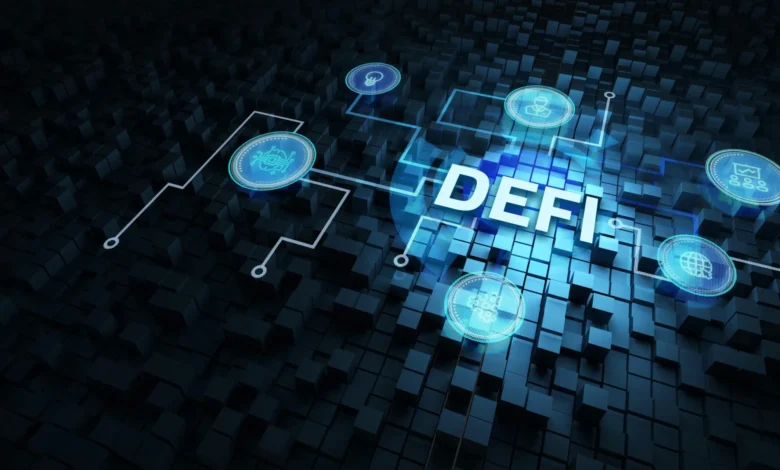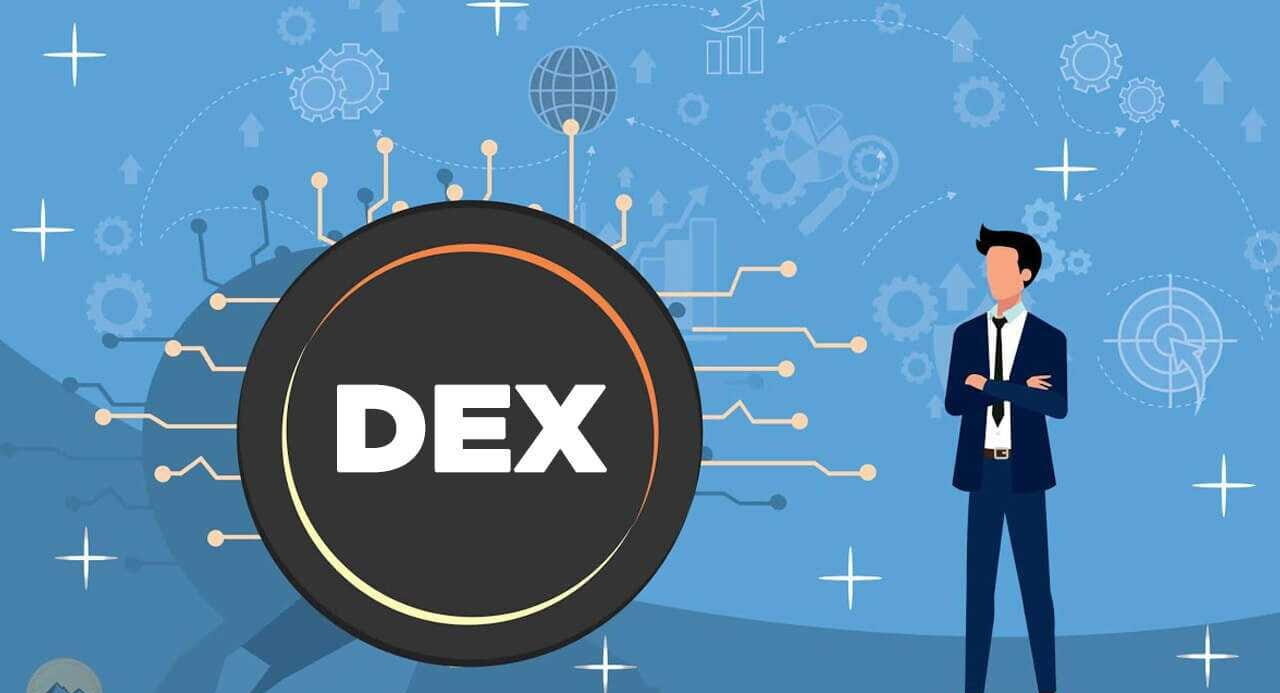DeFi vs TradFi Lending, Best Borrowing Option in 2025

The lending landscape has undergone a revolutionary transformation with the emergence of decentralized finance (DeFi) protocols, which are challenging traditional financial institutions. As borrowers seek optimal rates and flexible terms in 2025, the question of whether decentralized finance (DeFi) or traditional finance (TradFi) offers superior lending conditions has become increasingly critical for informed financial decision-making.
This comprehensive analysis examines current lending rates, accessibility, risks, and benefits across both sectors to determine which ecosystem provides better value for borrowers and lenders in today’s evolving financial market.
DeFi vs TradFi Lending Rates
Traditional financial institutions continue to operate within established frameworks, with lending rates heavily influenced by the Federal Reserve’s monetary policy and institutional risk assessments. Current personal loan rates range from 7.90% to 35.99%, with average rates around 12.29%, while mortgage rates have stabilized between 6.5% and 7% for 30-year fixed-rate loans.
Traditional banks, such as JPMorgan Chase, Bank of America, and Wells Fargo, as well as regional credit unions, maintain standardized rate structures based on credit scores, debt-to-income ratios, and collateral requirements. Prime borrowers with excellent credit scores typically access the lowest available rates, while subprime borrowers face significantly higher costs.
DeFi Lending Ecosystem Rates
Leading DeFi platforms, including Aave, Compound, and other algorithmic money markets, offer variable and stable interest rates determined by supply and demand dynamics rather than traditional credit assessments. Cross-chain lending protocols like Radiant Capital utilize LayerZero-based architecture to enable seamless interoperability across different blockchains, expanding borrowing opportunities.
DeFi lending rates fluctuate based on protocol utilization, with popular assets like Ethereum, Bitcoin, and stablecoins experiencing different rate environments. Overcollateralized lending remains the dominant model, with loan-to-value ratios typically ranging from 50% to 80% depending on asset volatility.
Detailed Rate Comparison Analysis
Traditional Finance Borrowing Costs:
- Personal loans: 7.90%-35.99% APR with origination fees up to 8%
- Mortgage loans: 6.5%-7% for qualified borrowers with 20% down payments
- Credit cards: 18%-29% APR for revolving credit
- Auto loans: 4%-12% depending on credit score and loan term
- Business loans: 6%-30% based on business creditworthiness and collateral
DeFi Protocol Borrowing Costs:
- Stablecoin borrowing: 2%-8% APR depending on protocol and utilization
- Volatile asset borrowing: 1%-15% APR with dynamic rate adjustments
- Flash loans: 0.05%-0.1% for same-block transactions
- Leveraged positions: Variable rates based on underlying asset performance
- Cross-chain borrowing: Premium rates for multi-chain liquidity access
Lending Yield Opportunities
DeFi platforms typically offer higher yields for lenders compared to traditional savings accounts and certificates of deposit. While traditional banks offer 4%-5% APY on high-yield savings accounts, DeFi protocols can provide 6%-15% APY on stablecoin deposits, albeit with additional risks associated with smart contracts and protocols.
Key Advantages of DeFi Lending
DeFi protocols operate without traditional Know Your Customer (KYC) requirements, geographic restrictions, or credit score prerequisites. This accessibility enables global participation for individuals who have traditionally been excluded from conventional banking systems, including unbanked populations and those in jurisdictions with limited financial infrastructure.
Transparency and Programmability
DeFi platforms offer real-time visibility into interest rates, liquidity reserves, and loan histories through blockchain transparency, which contrasts sharply with the opaque operations of traditional institutions. Smart contracts execute loan terms automatically, eliminating human intervention and potential bias in lending decisions.
24/7 Operations and Instant Settlement
DeFi operates globally with 24/7 availability and instant or near-instant settlement, regardless of weekends or holidays, while traditional banks operate within business hours and require days for settlement and fund clearance.
Innovative Financial Products
DeFi enables unique lending products impossible in traditional finance, including flash loans for arbitrage opportunities, automated liquidation mechanisms, and composable financial instruments that integrate across multiple protocols seamlessly.
Traditional Finance Advantages
Traditional financial institutions operate under comprehensive regulatory frameworks including FDIC insurance for deposits up to $250,000, consumer protection laws, and established legal recourse mechanisms. These protections provide security and stability that DeFi currently lacks.
Established Credit Infrastructure
Banks leverage decades of credit history data, sophisticated risk assessment models, and established relationships with credit bureaus to offer competitive rates to qualified borrowers. This infrastructure enables unsecured lending and flexible repayment terms for trusted customers.
Professional Risk Management
Traditional lenders employ experienced risk management teams, actuarial analysis, and diversified portfolios to maintain stability during market volatility. This expertise helps protect both lenders and borrowers from extreme market conditions.
Customer Support and Relationship Banking
Banks provide personalized customer service, financial advisory services, and relationship management that helps borrowers navigate complex financial decisions and optimize their borrowing strategies.
Risk Assessment: DeFi vs Traditional Lending
- Smart Contract Vulnerabilities: Protocol bugs, hacks, and exploits can result in total loss of funds, as demonstrated by numerous DeFi protocol failures and multi-million dollar exploits throughout the ecosystem’s history.
- Regulatory Uncertainty: Evolving cryptocurrency regulations could impact DeFi protocol operations, token valuations, and platform accessibility, creating compliance risks for users.
- Liquidation Risks: Automated liquidation mechanisms can trigger forced selling during market volatility, potentially causing significant losses for borrowers who cannot maintain adequate collateral ratios.
- Impermanent Loss: Liquidity providers face impermanent loss risks when providing assets to automated market makers, affecting overall returns on DeFi lending strategies.

Traditional Finance Risks
- Credit Risk: Traditional lenders face borrower default risks, though these are mitigated through credit assessments, collateral requirements, and diversified lending portfolios.
- Interest Rate Risk: Fixed-rate lending exposes institutions to interest rate fluctuations, while variable-rate products transfer this risk to borrowers.
- Regulatory Compliance Costs: Extensive regulatory requirements increase operational costs, which are ultimately passed to borrowers through higher rates and fees.
- Systemic Risk: Traditional banking systems face interconnected risks that can cascade during financial crises, as demonstrated during the 2008 financial crisis and recent regional bank failures.
Platform-Specific Analysis
- Aave Protocol: Offers both variable and stable rate borrowing with innovative features like flash loans and credit delegation. The platform supports multiple blockchains and provides competitive rates for major cryptocurrencies and stablecoins.
- Compound Finance: Pioneered algorithmic interest rate determination based on supply and demand dynamics. The protocol’s governance token (COMP) provides additional yield opportunities for users.
- MakerDAO: Focuses on DAI stablecoin generation through collateralized debt positions (CDPs), enabling users to borrow against various cryptocurrency assets while maintaining exposure to underlying price appreciation.
- Radiant Capital: Implements cross-chain lending functionality, allowing users to borrow assets on different blockchains while using collateral from other networks, expanding borrowing flexibility.
Major Traditional Lenders
- JPMorgan Chase: Offers comprehensive lending products with competitive rates for qualified borrowers, extensive branch networks, and sophisticated digital banking platforms.
- Bank of America: Provides relationship-based lending with preferential rates for existing customers, comprehensive financial advisory services, and integrated wealth management solutions.
- Wells Fargo: Specializes in mortgage lending with competitive rates, streamlined application processes, and extensive experience in residential and commercial real estate financing.
- Credit Unions: Often provide lower rates than traditional banks due to their member-owned structure and community focus, though with limited geographic reach and product offerings.
Specific Use Case Comparisons
Traditional banks excel in unsecured personal lending for borrowers with established credit histories, offering fixed-rate products with predictable monthly payments. DeFi requires cryptocurrency collateral but can provide lower rates for users with significant digital asset holdings.
Mortgage Lending
Traditional finance dominates mortgage lending due to regulatory requirements, government-sponsored enterprises (Fannie Mae, Freddie Mac), and established property appraisal processes. DeFi currently lacks the infrastructure for real estate-backed lending at scalable levels.
Business Financing
Traditional banks provide comprehensive business lending solutions including lines of credit, equipment financing, and SBA loans with established underwriting processes. DeFi offers innovative solutions for cryptocurrency-native businesses but lacks the infrastructure for traditional business lending.
Investment Leverage
DeFi protocols excel in providing leverage for cryptocurrency trading and DeFi strategies through overcollateralized lending and automated liquidation mechanisms. Traditional brokerages offer margin lending for securities but with different risk profiles and regulatory requirements.
Future Outlook and Emerging Trends
The financial industry is shifting toward hybrid models that integrate DeFi innovation with traditional financial stability. Projects like Compound Treasury and Aave Arc are developing institutional-grade DeFi products with regulatory compliance features.
Central Bank Digital Currencies (CBDCs)
Government-issued digital currencies could bridge DeFi and traditional finance, potentially enabling programmable money with regulatory oversight and traditional banking integration.
Regulatory Evolution
Increasing regulatory clarity around DeFi operations, stablecoin regulations, and cryptocurrency lending could reduce uncertainty and enable broader institutional adoption of decentralized lending protocols.
Institutional DeFi Adoption
Major financial institutions are exploring DeFi integration, potentially bringing traditional finance liquidity and risk management expertise to decentralized protocols while maintaining regulatory compliance.
Practical Decision Framework
Choose DeFi Lending When:
- You hold significant cryptocurrency assets as collateral
- You need 24/7 access to lending markets
- You prefer transparent, programmable lending terms
- You’re comfortable with smart contract risks
- You want to participate in protocol governance and yield farming
- You need access to innovative financial products like flash loans
Choose Traditional Finance When:
- You need unsecured lending based on creditworthiness
- You prefer regulatory protection and deposit insurance
- You want personalized customer service and financial advice
- You need real estate or business financing
- You prioritize stability and predictable terms
- You lack cryptocurrency collateral or technical expertise
